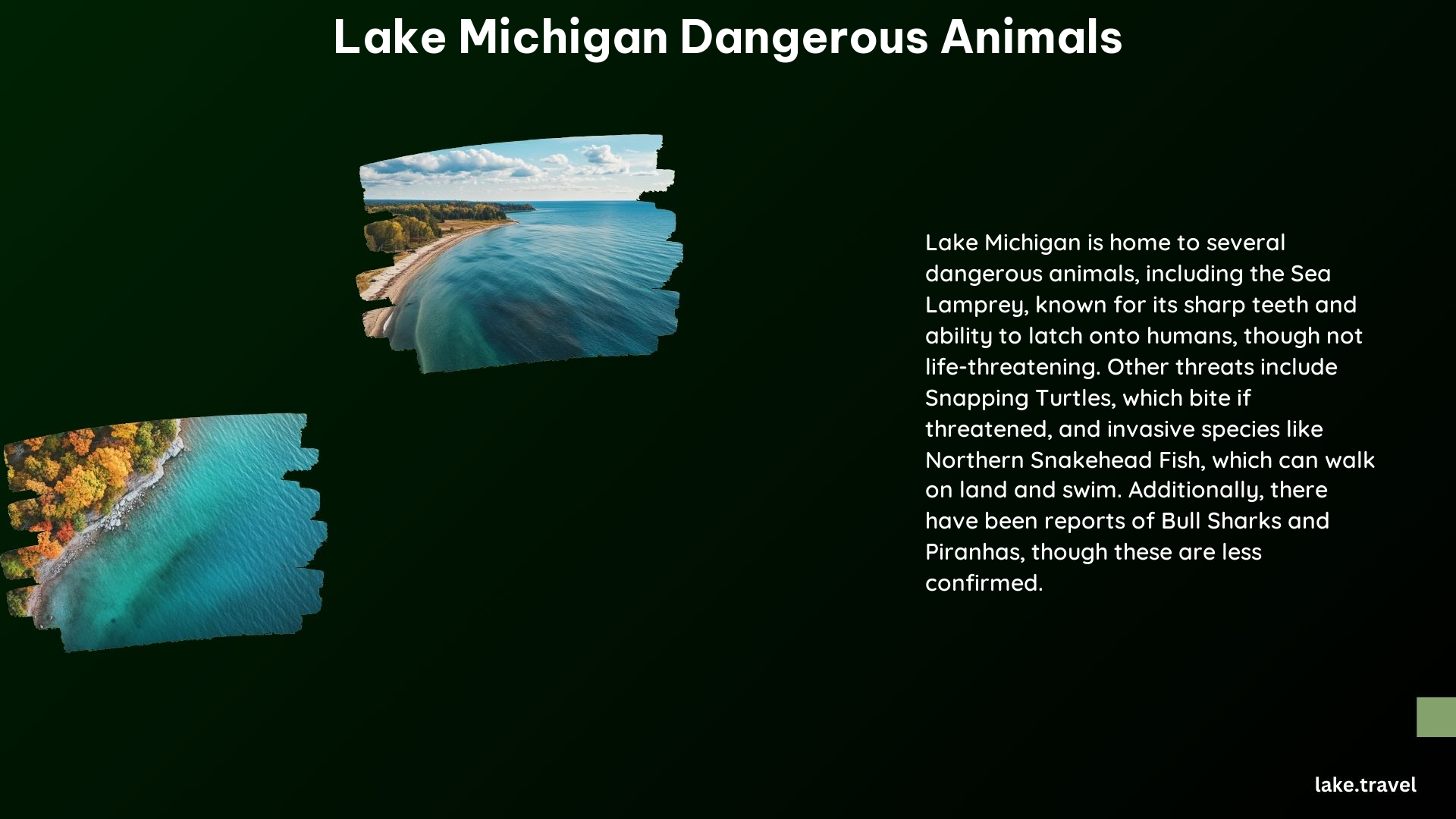Lake Michigan is a vast and captivating body of water, attracting millions of visitors each year. However, it is also home to a variety of dangerous animals that can pose a threat to those who venture into its waters or its surrounding areas. In this comprehensive guide, we will explore the most notable Lake Michigan dangerous animals and provide valuable insights to help you stay safe during your lakeside adventures.
Sea Lamprey: The Parasitic Threat

The Sea Lamprey is one of the most notorious Lake Michigan dangerous animals. These eel-like fish have a round, sucker-like mouth equipped with sharp teeth, allowing them to latch onto their prey. While they primarily feed on cold-blooded organisms, they can also attach to humans, causing painful but non-life-threatening bites. Originating from the Atlantic Ocean, Sea Lampreys have adapted to thrive in the freshwater environment of Lake Michigan, making them a significant concern for both wildlife and human safety.
Snapping Turtles: Aggressive Aquatic Predators

Snapping turtles are a common sight around the shores of Lake Michigan and can pose a serious threat if encountered. These reptiles are known for their aggressive behavior and powerful jaws, capable of inflicting severe injuries if they feel threatened or are handled improperly. Caution is advised when approaching or interacting with snapping turtles near the lake.
Northern Snakehead Fish: The Invasive Land-Walker
The Northern Snakehead Fish is an invasive species that has made its way into Lake Michigan. These fish can grow up to 33 inches in length and possess sharp teeth, making them a formidable predator. What sets the Northern Snakehead apart is its ability to walk on land for short distances, allowing it to move between water bodies and potentially disrupt the local ecosystem.
Cyanobacteria: The Toxic Algae Threat
Cyanobacteria, commonly known as blue-green algae, are a common occurrence in many lakes, including Lake Michigan. While most cyanobacteria are harmless, some species can produce toxins that can cause illness in humans. Exposure to these toxins can occur through ingestion, skin contact, or inhalation, making it crucial to be aware of any algal blooms or advisories when enjoying the lake.
Piranha and Pacu: Unexpected Freshwater Predators
Although there have been no confirmed reports of Piranha in Lake Michigan, their relative, the Pacu, has been found in nearby Lake St. Clair. These fish, with their human-like teeth, are capable of surviving in cold freshwater environments, making them a potential threat to swimmers and boaters in the region.
Bull Sharks: The Freshwater Invaders
While sightings are rare, there have been unconfirmed reports of Bull Sharks in Lake Michigan. These sharks are known for their ability to adapt to freshwater environments, raising concerns about their potential presence in the lake. Caution is advised, as Bull Sharks are considered one of the most dangerous shark species.
Land-Based Dangers: Venomous Spiders and Snakes
In addition to the aquatic threats, Lake Michigan’s surrounding areas also harbor various land-based dangerous animals. Venomous spiders, such as the brown recluse and black widow, can be found in the region, posing a risk to hikers and outdoor enthusiasts. Additionally, there have been occasional sightings of rattlesnakes, black bears, and gray wolves near the lake, further emphasizing the need for vigilance and proper precautions.
Navigating the waters and shores of Lake Michigan requires a keen awareness of the potential dangers that lurk beneath the surface and beyond. By understanding the characteristics and behaviors of these Lake Michigan dangerous animals, you can take the necessary steps to protect yourself and your loved ones during your lakeside adventures. Remember to always exercise caution, follow local advisories, and respect the natural habitats of these creatures to ensure a safe and enjoyable experience.
Reference:
– Sea Lamprey in the Great Lakes
– Snapping Turtles in the Great Lakes
– Northern Snakehead Fish in the Great Lakes
– Cyanobacteria in the Great Lakes
– Piranha and Pacu in the Great Lakes
– Bull Sharks in the Great Lakes
